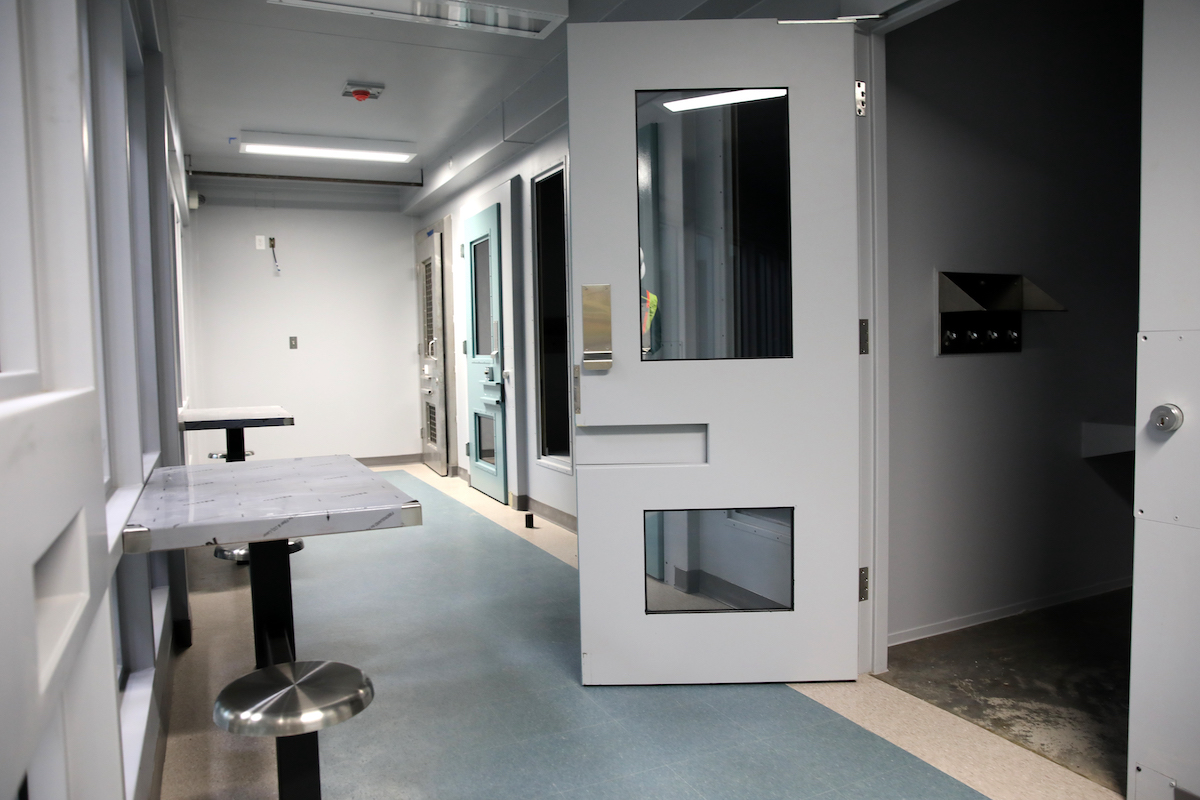Grand Jury Issues Blistering Report on Mental-Health Care in Santa Barbara County Jail
No Training, No Night Counseling, No Statistics on Prisoner Mental-Health Conditions

This was a confounding week for those who grapple with the many-headed hydra of Santa Barbara’s criminal justice system and the many people suffering from mental illness who are thrown in jail instead of receiving treatment. On that subject, there was some good news and some very bad news.
The encouraging news took place in front of the county supervisors this Tuesday, when two department heads presented possible solutions for diverting mentally ill prisoners from jail to facilities that can provide effective treatment. Such efforts, they said, would make the community safer, reduce recidivism rates, cut costs, address racial sentencing disparities, and be more humane. “That’s the big hypothesis,” exclaimed Supervisor Joan Hartmann.
Though both reports laid out clear and detailed road maps for achieving these ends, the plans assumed such treatment programs would be funded and have sufficient staffing available. “We must try to do something different,” exclaimed Supervisor Steve Lavagnino. “The alternative is what we’ve been doing for the past 20 to 30 years,” he said, adding, “I think we can all agree the system isn’t working.”

A grim description of that current system came from this year’s Grand Jury. Four reports laid out in painful detail how systemic gaps in the current system led to the deaths of five County Jail inmates last year. All were repeat offenders and all had long histories of severe mental-health and substance-abuse challenges.
The centerpiece of the Grand Jury’s work was a report titled “A Vicious Cycle,” describing the fentanyl-related deaths last year of two inmates with extensive rap sheets and severe behavioral problems. One, a 34-year-old woman busted for burglary in Isla Vista, had been arrested more than a dozen times. At the time of her last arrest in March 2022, she could not stand still, was talking to people who were not there, and had been placed into restrictive housing because she couldn’t “program with other inmates.” She was ordered to a state mental hospital after she’d been declared incompetent to stand trial (IST), but the waiting list for such placements was so long that it would be more than eight months. When the Grand Jury asked what programs were available to her in the jail, the answer was, “Coloring books were used to occupy her mind.” Mostly she was kept in isolation because she was rude and disruptive. On September 9, 2022, she was found dead of a fentanyl overdose in her cell.
In the second half of 2022, Santa Barbara County referred 77 inmates to state mental hospitals on the grounds they were incompetent to stand trial. That, the Grand Jury reported, is one of the highest rates in the state. In July 2019, there were 13 felony IST inmates in the jail. As of June 2023, there were 52. That jump reflects the growth in jail population after COVID’s restrictions were lifted. But it also reflects the intensity of the mental-health challenges facing inmates — and custody officers — in the county jail.
Among the many shortcomings identified by the report was the lack of solid statistical information on the incidence and severity of mental illness in the county jail. When the jury asked the Sheriff’s Office what percentage of the jail population suffered from mental illness, it was told that such statistics do not exist. The report concluded that had this 34-year-old woman — and another inmate who also died of a fentanyl overdose — gotten mental-health treatment earlier on, the outcome could have been much better, their number of repeat offenses much fewer, and their cost to the community lower.
Not mentioned in the report — but brought up at the supervisors’ meeting — was that five years ago, a report commissioned by the county Probation Department concluded that it cost $92,000 more per year to jail someone rather than to provide services.
Dramatically, the Grand Jury detailed the case of a 320-pound Santa Maria man arrested on January 11, 2022, for nonviolent spousal abuse and kidnapping charges. Twenty minutes after being booked, he was dead of a heart attack. Following safety procedure, deputies started to undress him as he was being placed in a protective cell. When he resisted, five custody deputies placed him facedown, naked, in a prone restraint. The County Coroner’s Office had found five factors that contributed to the heart attack — three of them being an enlarged heart, the presence of methamphetamine in his system, and obesity — and ruled his death accidental.
The Grand Jury consulted with two out-of-county forensic medical professionals who concluded the heart attack would not have occurred but for the deputies’ insistence that the man enter the safety cell. The report from the experts stated that the death was caused by “cardiac arrest caused by the on-stomach prone restraint hold, including knees on his back and shoulder near his neck and his vigorous resistance to it.” The death, the experts concluded, “would more accurately be labeled as a homicide on the death certificate.” The Grand Jury suggested the Coroner’s Office and the District Attorney’s Office — which investigated the death and found no foul play — might be susceptible to “confirmation bias” and recommended that the state attorney general step in to investigate the death.
The real problem, the Grand Jury found, was that the arresting police officers never told doctors in the emergency room that the prisoner had behaved so bizarrely that they gave him a helmet to wear for his own protection. Although the man disclosed his significant mental-health challenges upon being booked into the jail, Wellpath — the private company providing health care to jail inmates — does not have a mental health professional at the jail around the clock. Wellpath’s contract only requires the company to provide mental health professionals during regular business hours.
The Grand Jury recommended that all custody officers receive 40 hours of mental health training, that mental health professionals be on staff at all times, and that the Sheriff’s Office compile more comprehensive statistics on the scope and intensity of mental illness among inmates at the county jail.




You must be logged in to post a comment.